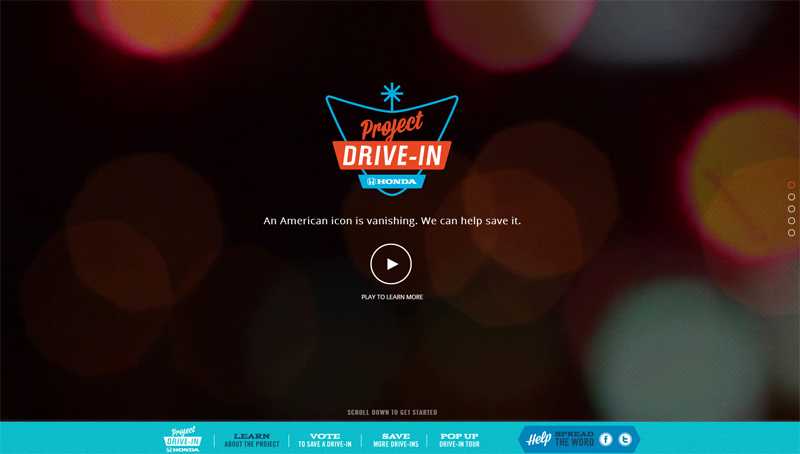Honda is rolling out a new national activation in the USA, Project Drive-In, aimed at saving drive-in theatres which are now on the edge of extinction due to the end of 35mm film distribution and switch to digital projection.
First drive-ins opened in the USA in 1933 and gained in popularity later in 1950s-60s, when there were over 4,000 of them across the country. Now, these venues are less popular, but remain a valuable piece of the American cinema and car culture.
The campaign is designed to raise awareness of drive-in cinemas as they face technological challenges. The brand will supply at least five drive-in theatres with the costly digital projectors to prevent them from shutdown. The U.S. public will be able to vote online for the venues which will get the funding, as well as donate to save more drive-ins on the dedicated scroll-down website.

“In less than 3 months, the majority of American drive-in theaters will face closure with the movie industry’s switch from film to digital. Upgrading to digital projection costs roughly $80,000,” the site says. The voting is running for one month, from August 9 through September 9. The winning drive-ins will get the equipment and will also host special celebratory screenings of Sony Pictures Animation’s Cloudy with a Chance of Meatballs 2.
Fundraising is not the only goal of the effort. The brand will also launch pop-up drive-ins at Honda dealerships across the country to reach consumers offline—the temporary venues will host free screening of the first Cloudy with a Chance of Meatballs film.
“Cars and drive-in theaters go hand-in-hand, and it’s our mission to save this decades-old slice of Americana that holds such nostalgia for so many of us,” commented Alicia Jones, Manager of Honda & Acura Social Marketing at American Honda Motor Co., Inc. “We’re committed to helping the remaining drive-in theaters flourish with the move to digital projection.”